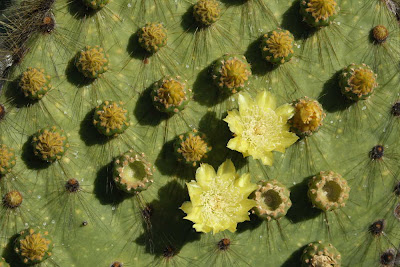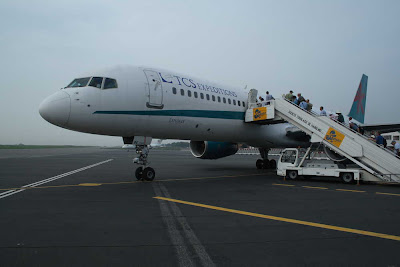So let’s see. So far we’ve been to Japan, our feared adversary in WW II, Vietnam, no need to elaborate there, India, threatening to steal every American job, and now Iran, part of the so-called ‘Axis of Evil”. Perhaps this trip should be called “Around the World to Countries We’ve Bombed or Would Like To Bomb”. Even with a title like that you could still probably find 74 people to fill the seats on Explorer I (the name of our Boeing 757).
The anticipation of this stop by everyone here cannot be overstated. Many people, including myself, signed on specifically for the chance to go to Iran, a country that very soon will likely be closed to international travel for years to come. Admittedly, we are seeing an extremely small slice of this vast country - larger and more varied than the state of Alaska. However, we are immersed in the heart of one of Iran’s biggest and most important cities,

the ancient capital of Esfahan. We have been able to walk the streets freely and look into shops, have numerous strangers come up to us and say, “We like America”, and listen to a host of local guides who have been well spoken, gracious, and as honest as they can possibly be in a country that would possibly imprison them for speaking out too forcefully against the regime.
I wish I could somehow make it so that more Americans would travel, especially to the places with such emotionally laden names: Viet Nam, Cuba, Iran. These names, so charged with powerful emotions and patently distorted truths, prevent us from realizing that these countries are mostly normal and very much like our own. One man on our trip, evidently allowing the word Iran to hinder his perspective, asked on the way here, “Do they have post cards in Iran”?
We have not gotten to go out into the desert to see the landscape - our entire focus here is cultural and historical. I don’t mind that but the bits of the Zagros Mountains that I can see from my 4th floor hotel room look exactly like the mountains west of Tucson. Oh, how I’d love to check it out. There is a large river flowing through Esfahan (situated at an elevation of 5,100 feet), which has made life possible here. The pistachios are delicious! The yogurt is sour and thick. I love the kebabs but steer away from the orange juice which is Tang.
We have visited ornate bridges across the river and some of the many great mosques that once made this city such an international destination (this year perhaps as few as 500 Americans will travel to Iran as tourists).

We have learned how the two branches of Islam - Sunni and Shi’ite - originated and learned that Iran and Iraq are where most of the Shi’ites live. It all started just days after the prophet died in 632 AD. (Oh for the want of a single male heir)!
The city is clean beyond description and is beautifully landscaped. It is cleaner than most cities I have ever visited. The people seem quite cosmopolitan, not unlike those of Buenos Aires, Argentina. They dress smartly although younger people are starting to wear more t-shirts. All women have to wear a veil over their hair (not their faces) and must wear a gown over their clothes that neutralizes their shape. Since most of the women on our trip despise being told what to wear, I put on slacks and a jacket when

touring - it was a sign of support for them and made me look more dressed like most Iranian men. It all looks very Islamic on the streets but this is not a strongly religious place.
In fact, much of the antigovernment sentiment in this country is centered here. Like our own country, Iran has mixed feelings about it’s leadership, although here his negative ratings are 50%, rather than the 70% in our own country. Iran, like any place and despite the image that is being foisted upon us by certain politicians, does not represent a single minded front. After being here, I am appalled by the appellation “Axis of Evil” that was given to Iran. These people are warm, quick to smile, clean, sophisticated, knowledgeable, and curious. Evil they are not. Bad elements that we are not seeing due to time constrains must certainly exist here. But as I listen to many of the comments by some of the crowd on our bus, I think there will be a good number of more open American minds towards this endlessly fascinating place. And yes, there are post cards.
One woman on our trip told her mom she was going to Iran. Her mother pleaded with her not to go. She could not understand - ‘It’s so dangerous!’ Weeks later, her mom asked her if she had changed her mind and the daughter said, “Yes, I’ve decided now that I’m going to Persia”. Her mother was ecstatic and encouraged her to visit all of the wonderful monuments and cultural sites there was to see in such a storied land.

















































